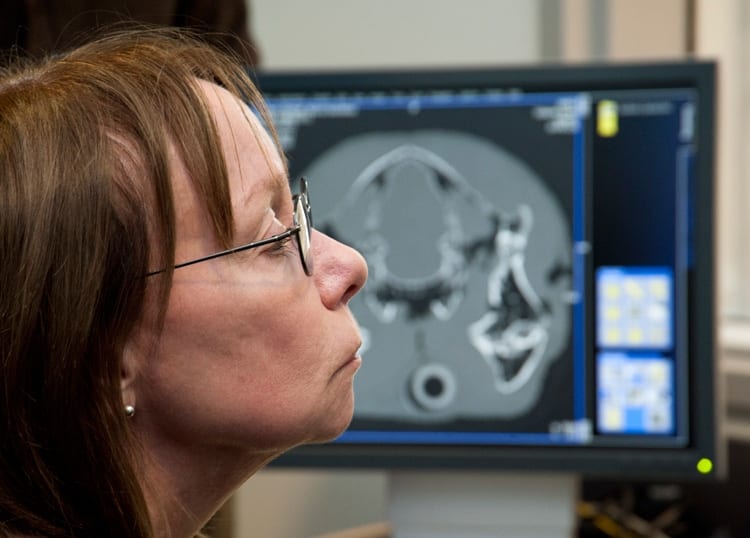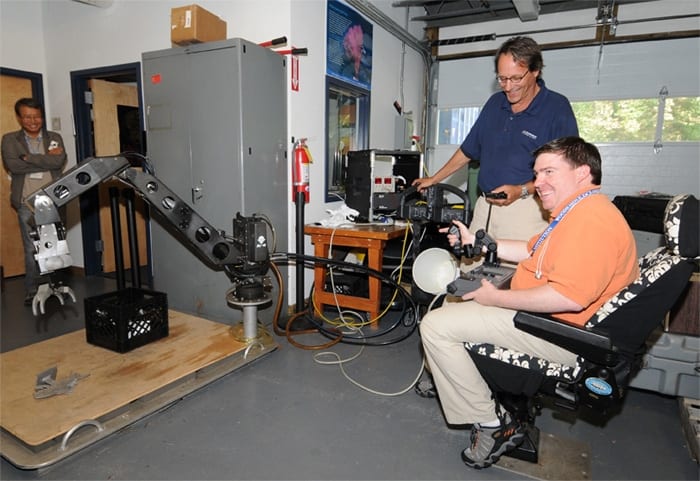News Releases
WHOI Scientist Receives Gordon and Betty Moore Foundation Marine Microbiology Initiative Investigator Award
Mak Saito, a biogeochemist at Woods Hole Oceanographic Institution, has been selected for a Marine Microbiology Initiative (MMI) investigator award by the Gordon and Betty Moore Foundation. Saito is one…
Read MoreWHOI Biologist Ketten Named AAAS 2012 Fellow
Darlene Ketten of the Woods Hole Oceanographic Institution has been named a Fellow of the American Association for the Advancement of Science (AAAS). Election as an AAAS Fellow is an…
Read MoreWHOI Engineers Develop and Test New Underwater High-Speed Wireless Communication System
Engineers from the Woods Hole Oceanographic Institution (WHOI) have developed a new wireless underwater communication system to control remotely operated vehicles (ROVs) in real time. This new method may eliminate…
Read MoreNew Research Consortium Brings Scientists, Fishermen, and Managers Together to Address Seal Issues in the Northeast
People come from miles away to see the seals off the shores of Cape Cod and surrounding regions, but the animals are creating some challenges for local fishermen. Recent increases…
Read MoreFishing for Answers off Fukushima
Japan’s “triple disaster,” as it has become known, began on March 11, 2011, and remains unprecedented in its scope and complexity. To understand the lingering effects and potential public health…
Read MoreGenetic Patterns of Deep-Sea Coral Provide Insights into Evolution of Marine Life
The ability of deep-sea corals to harbor a broad array of marine life, including commercially important fish species, make these habitat-forming organisms of immediate interest to conservationists, managers, and scientists.…
Read MoreScientists Uncover Diversion of Gulf Stream Path in Late 2011
The Gulf Stream moved well north of its normal path in early November and mid-December of 2011, causing warmer-than-usual ocean temperatures along the New England continental shelf.
Read MoreNewest Navy Research Vessel Is Named Neil Armstrong
Secretary of the Navy Ray Mabus announced the nation’s newest research vessel will be named the R/V Neil Armstrong, after the renowned astronaut and the first man to set foot on the moon. The ship will be operated by the Woods Hole Oceanographic Institution (WHOI).
Read MoreResearchers Highlight Growing Problem of Ocean Acidification
An international group of scientists, including researchers from the Woods Hole Oceanographic Institution, are working to improve communication about ocean acidification to help the public better understand the pressing global…
Read MoreDedication Ceremony Held for New Laboratory
WHOI President and Director Susan Avery and Director of Research Larry Madin were joined by National Institute of Standards and Technology (NIST) Deputy Director Willie May at a dedication ceremony Sept. 20 for the new Laboratory for Ocean Sensors and Observing Systems. The ceremonial ribbon cutting took place by the state-of-the-art facility’s high bay entrance, located on the Institution’s 160-acre Quissett campus.
WHOI received an $8.1 million grant from NIST in 2010 to fund construction of the new scientific research facility, as part of the American Recovery and Reinvestment Act. WHOI contributed $4 million to the project. The 27,000-square-foot, “green”-designed building will provide space for a major effort to create long-term ocean observatories.
Read MoreNew Website Invites Public to Help Identify Seafloor Life and Habitats
A new partnership between oceanographers studying seafloor habitats, Web programmers and social scientists has resulted in a unique, interactive website called “Seafloor Explorer,” which asks members of the public to help identify objects they see in images of the seafloor. Seafloor Explorer (www.seafloorexplorer.org) launches September 13.
The team has more than 40 millions images, but are launching the site with a preliminary set of 100,000 – all of them taken by HabCam, a habitat mapping underwater vehicle. HabCam was developed and built by the HabCam group, which comprises marine biologists and engineers from the Woods Hole Oceanographic Institution (WHOI) as well as fishermen and other scientists.
Read MoreNASA/WHOI Voyage Set to Explore Link Between Sea Saltiness and Climate
A NASA-sponsored expedition is set to sail to the North Atlantic’s saltiest spot to get a detailed, 3-D picture of how salt content fluctuates in the ocean’s upper layers and how these variations are related to shifts in rainfall patterns around the planet.
Read MoreHuman Impact Felt on Black Sea Long Before Industrial Era
When WHOI geologist Liviu Giosan first reconstructed the history of how the Danube River built its delta, he was presented with a puzzle. In the delta’s early stages of development,…
Read MoreTracking Fish Through a Coral Reef Seascape
Ocean scientists have long known that juvenile coral reef fishes use coastal seagrass and mangrove habitats as nurseries, later moving as adults onto coral reefs. But the fishes’ movements, and…
Read MoreWHOI Hosts Public Talk – Titanic in 3D: An Archaeological Exploration
Titanic is an iconic shipwreck that has fascinated the public for a century. But it also has a scientific and technological story to tell. On Saturday, Sept. 8, the Woods…
Read MoreConstruction Begins on Newest Ocean Research Ship
new ocean research ship, AGOR 27, Ocean Class ship
Read MoreWHOI Scientist Contributes to Nature Study on Ocean Health
WHOI Senior Scientist Scott Doney is one of several contributors to a new comprehensive index designed to assess the benefits to people of healthy oceans worldwide. The Index – being…
Read MoreWHOI to Host Public Event on Ocean Acidification
The Woods Hole Oceanographic Institution (WHOI) will host a public forum on ocean acidification and its effects on ocean life. Ocean acidification is a global problem that results from the…
Read MoreWoods Hole Oceanographic Institution Names New CFO
The Woods Hole Oceanographic Institution (WHOI) has appointed Jeffrey Fernandez to the position of Chief Financial Officer and Vice President of Finance. Fernandez assumes his post July 23.
Read MoreWHOI Announces 2012 Ocean Science Journalism Fellows
Ten writers and multimedia science journalists from the U.S., Canada, and Poland have been selected to participate in the competitive Woods Hole Oceanographic Institution (WHOI) Ocean Science Journalism Fellowship program. The program takes place September 9-14, 2012, in Woods Hole, Mass., on Cape Cod.
Read MoreWHOI Scientists and Engineers Partner with World-Renowned Companies to Market Revolutionary New Instruments
Woods Hole Oceanographic Institution (WHOI) researchers have partnered with two companies to build and market undersea technology developed at WHOI: the Imaging FlowCytobot, an automated underwater microscope, and BlueComm, an underwater communications system that uses light to provide wireless transmission of data, including video imagery, in real or near-real time.
Read MoreScientists Discover New Trigger for Immense North Atlantic Ocean Spring Plankton Bloom
On this July 4th week, U.S. beachgoers are thronging their way to seaside resorts and parks to celebrate with holiday fireworks. But across the horizon and miles out to sea…
Read MorePressure Testing of New Alvin Personnel Sphere Successful
The human-occupied submersible Alvin reached a major milestone in its upgrade project on June 22 when its new titanium personnel sphere was successfully pressure tested, reports the Woods Hole Oceanographic…
Read MoreMelting Sea Ice Threatens Emperor Penguins, Study Finds
At nearly four feet tall, the Emperor penguin is Antarctica’s largest sea bird—and thanks to films like “March of the Penguins” and “Happy Feet,” it’s also one of the continent’s…
Read More


